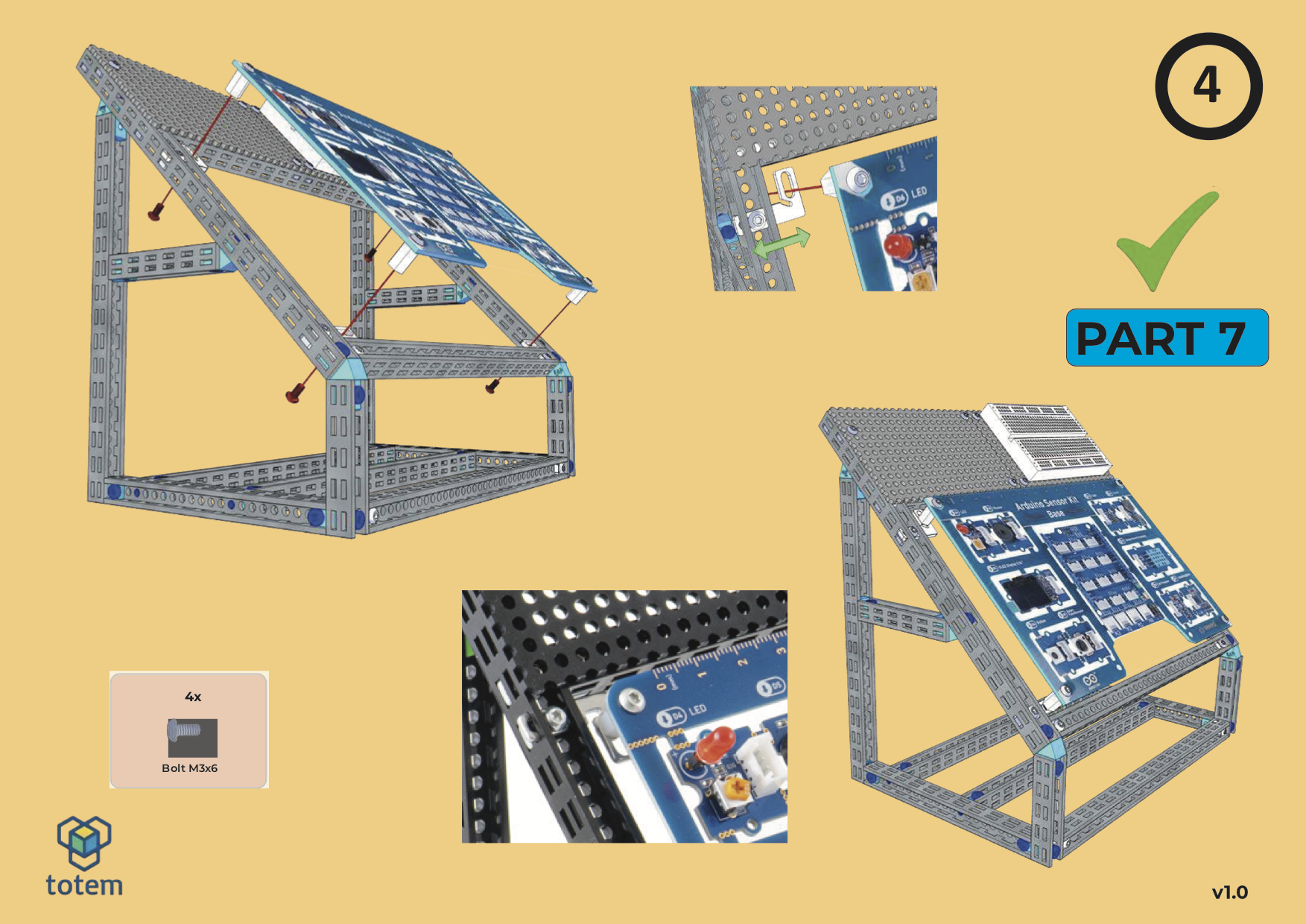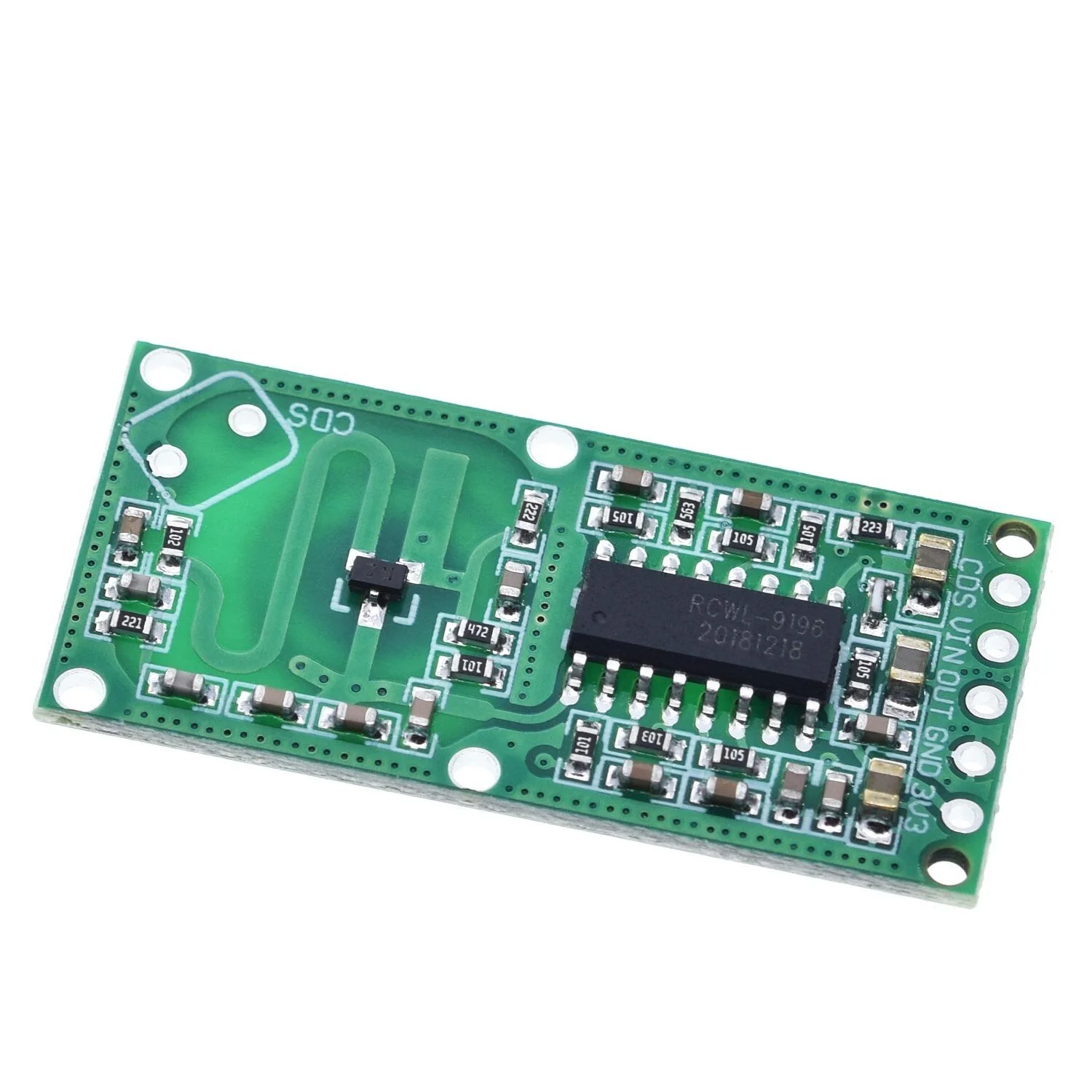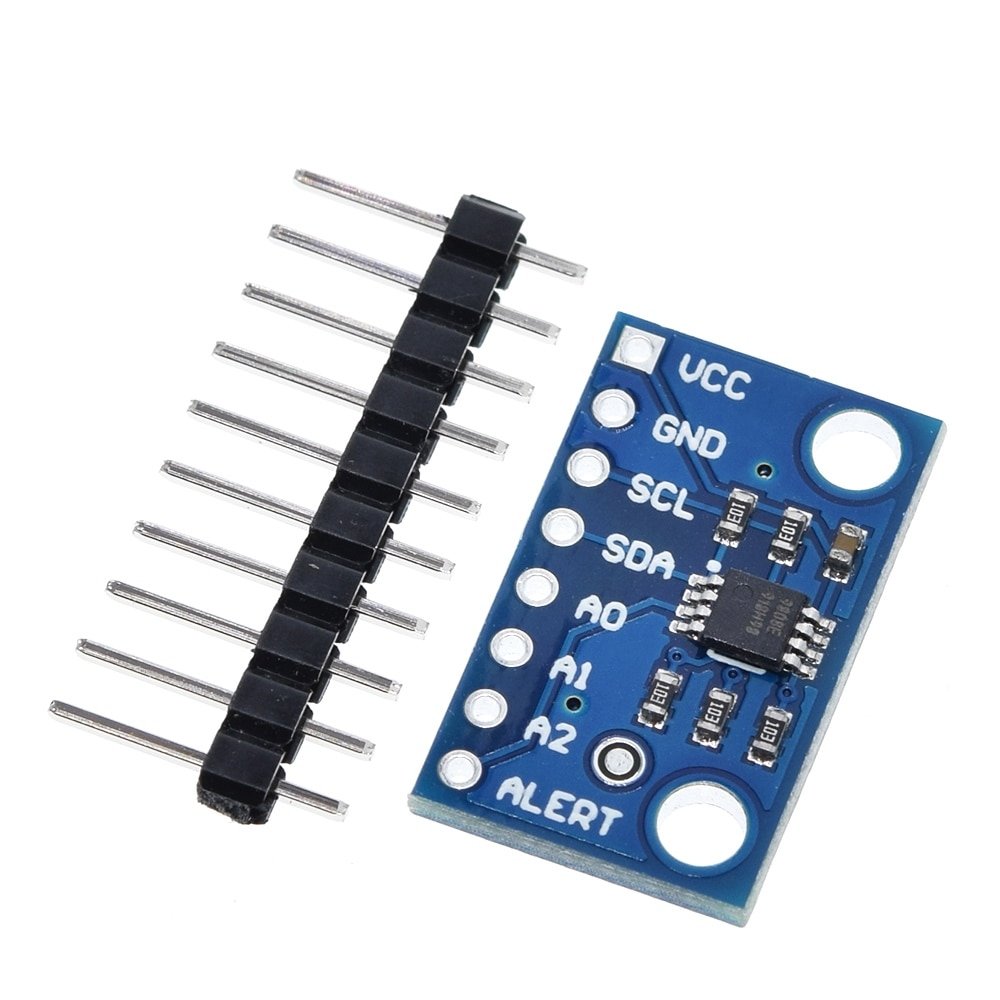Training Stage 2: Expansion Pack
For those looking to expand their skills - additional components for building lab and field applications
The Biomaker expansion pack is designed for those with previous experience, or those who have already completed the No-Code Programming for Biology training. The expansion pack contains a chassis-building kit and a pack of additional sensors useful for a wide range of biological applications. Biomaker can also offer a range of extended training materials and personalised support alongside this pack. You can use the expansion pack to start building your own devices and prototypes for lab and field applications.
This expansion kit is a complement to the Stage-1 Beginners Kit. It contains:
Chassis Building Kit: a kit from Totemmaker (https://totemmaker.net) - to self-assemble a self-standing frame for the Grove Beginner Kit that was distributed in the Stage-1 kit. An image of the completed stand is shown below, and it provides a support for accessories and a small breadboard for interfacing custom components.
Extended components Pack: a set of sensor and output devices, which include some low-cost but sophisticated board components for learning how to integrate new electronic functions with no-code programming, and building novel customised instruments. Details shown below:
Advanced Guide and Tutorials: graphical instruction guide for advanced applications.
To apply for an expansion pack:
Please send a picture of your beginner’s kit (or equivalent hardware) in use and a short sentence explaining why you are interested in receiving an expansion pack to coordinator@engbio.cam.ac.uk.
1. Totemmaker Chassis Kit
The Stage-2 training pack includes a custom Totemmaker kit to assemble a stand for the Grove Beginner Kit, including a small breadboard for mounting electronic components. It also provides space for mounting the LCD display provided by Biomaker in the Stage-2 pack. A PDF with full instruction for assembly can be found at: https://totemmaker.net/wiki/rack-for-grove-kits/. Totem provides an integrated system of structural beams and adapters for rapid assembly of frameworks for instrumentation and robotics. These are characterised by (i) the use of plastic beams which are easy to cut for custom applications, yet relatively mechanically strong, and (ii) incorporation of 1cm spaced mounting holes/slots and a range of clever adapters to allow different types of modular assembly. If needed, the provided stand can also be extended with additional Totemmaker beams and sheets. More details can be found at:
https://totemmaker.net/wiki/rack-for-grove-kits/ (Find assembly instructions here)
https://totemmaker.net/blog/micro-lab-and-beyond/ (More design ideas)
https://totemmaker.net/blog/totem-best-building-system-for-makers/ (General guide to assembly)
Build a component stand for the Grove Beginner Kit and system expansion
2. Extension Pack with new components
We provide a pack of new components that can be used to expand the capabilities of the Grove Beginner board (that was provided in Stage-1). You should: assemble the Totem stand, and mount the Grove Beginner kit circuit board and small breadboard before proceeding. Then:
(i) Mount the 16x2 character LCD screen and connect to the circuit board as described below. This screen provides a useful display for debugging during circuit assembly and testing. See instructions here.
(ii) Connect and test the DS1302 real-time clock board. See instructions here.
(iii) Connect the ring of addressable RGB LEDs. You may find it useful to connect these devices for accurate timing and for practice with driving displays. In addition, the RGB LED ring can be useful for vivid displays of programmed sequences, useful for testing XOD programming skills. See instructions here.
(iv) Experiment with the range of provided devices that can be used to measure a wide range of parameters, and create custom instruments for scientific use. Click on the items pictured below to find details about each of the components contained in the extension pack. Linked pages contain details of common uses, how to connect them to your Grove board, and how to programme them using XOD. You should find that many of these devices are highly complex and capable of accurate and internally calibrated measurements of important parameters like colour, light intensity. humidity, temperature, distance, weight, soil moisture, proximity, etc - and the XOD-Arduino system allows simple handling of these devices. These are a small selection of the many devices that are available, and can be put together to build custom instrumentation.
XOD Forum
Please send feedback and any suggestions to us at the email address below. If you are having difficulty with any issue, please visit the XOD Forum. Here there is a dedicated Biomaker section (https://forum.xod.io/c/biomaker/13), which will allow you to tap into the collective expertise of the XOD community - and which we will monitor also. The forum is great source of useful information and news about newly released libraries, and is highly recommended as a source of collected information about XOD.
Timing and display components
The thumbnails below are linked to pages with additional technical information, links to the relevant XOD libraries and example program sketches.
Click through to navigate to the additional resources:
Sensors
Progression to Stage-3 of Biomaker
We hope that you find this extension pack a useful a useful practical introduction to the mixing and matching of sensor arrays, data processing and display. We have put together a further Stage-3 extension pack, that includes a compatible set of prototype IoT devices - that will allow you to take these experiments and incorporate them into mobile, battery-powered instruments with added GPS and LoRa radio communications. (LoRa radio communications use low-energy spread-spectrum methods for long distance communication, ~3km in urban environments and 10km+ across open country - great for remote sensing applications). If you would like to explore this by obtaining a free Stage-3 pack - please document a Stage-2 project on the free Hackster website (https://www.hackster.io/about), send us a note to the email address below, and we’ll review and deliver the hardware.
Hackster database of projects
Hackster contains over 30,000 open source project descriptions and more than 1.9M registered users worldwide. We use it as a repository for Biomaker Challenge projects, and it allows you (without effort) to automatically build a portfolio of projects for example: https://www.hackster.io/antonio-ruiz and https://www.hackster.io/wayland2.

















